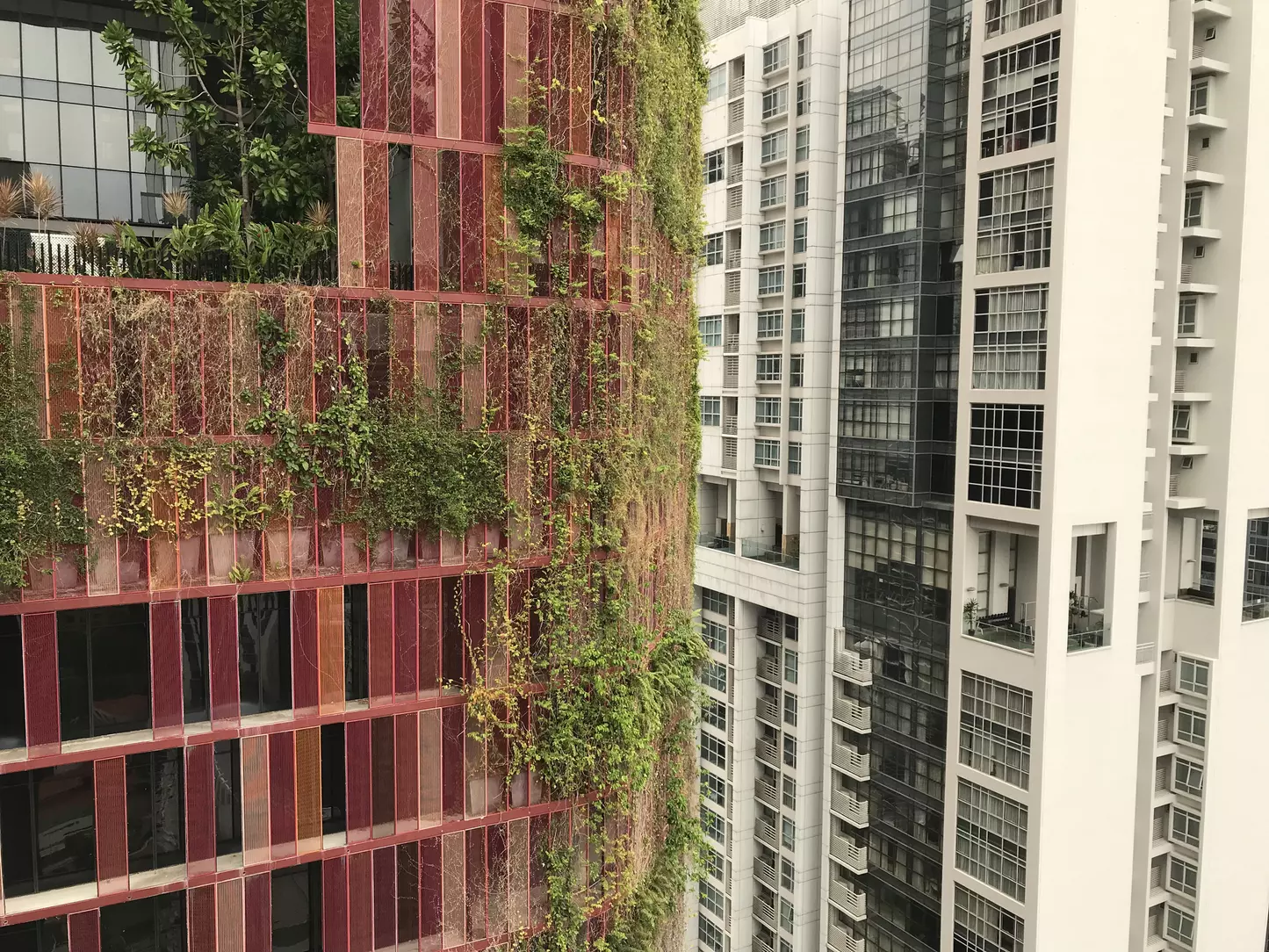The city, this great charmer. Its tumultuous growth, which began in the 19th century, continues according to an accelerating principle that shows no signs of reversing itself. Increasingly global, epicentre of a multiplicity of services and branched out into a combination of physical and digital infrastructures, it makes its management a complex challenge, impossible to govern through a simplified control room.
By navigating this web of interconnections, some architectural theorists believe that rethinking urban space according to conceptual metaphors inspired by laws and assumptions of a scientific nature may prove to be an effective key to optimising its resilience. It is from this vision that biourbanism came to be, an urban planning model that equates the city with a living organism, endowed, like any organic biological structure, with a non-linear functioning system.
According to biourbanism, the city would in fact be an 'anthroma', an ecological system redesigned by man through his multiple and layered interventions throughout history. Mending the distance between nature and the built environment, improving the flow of the integration and systemic management of all elements, would achieve better urban quality and psychological well-being for those who inhabit and use the city.
Equally many theoretical layers help to define the conceptual application of biourbanism. Some, such as biophilic design and bioarchitecture, have a more specifically design-related reference, and refer in particular to the theory of fractals and the need to identify and pursue specific geometric and formal models, peculiar to the organic world and often also deeply set in vernacular architecture, in order to harmonise the integration between the built environment and nature. Others, more distinctly meta-planning, look to statistical mechanics, thermodynamics, evolutionary biology, biopolitics and epigenetics as areas from which to optimise the planning of the connections and flows that regulate the use of exchanges and services in the urban fabric.
The objective of this sartorial action of stitching up, as Christopher Alexander, an Austrian-born American architect and theorist who is among the references of the biourbanism movement, has called it, could be shrewdly summed up in the formula ‘building beyond time’, so as to imbue buildings with an imperishable quality and a more adaptable and effective governance.
“The emergence of biourbanism as a discipline is the result of unexpected connections,” says Antonio Caperna, president of the International Society of Biourbanism, a non-profit scientific network that promotes ideas and research on biourbanism worldwide. “Christopher Alexander's ideas, generally boycotted by the academy, have been the starting point for a number of architects, physicists, philosophers, biostatisticians, psychologists and ecologists who have looked at architecture and urbanism through the lens of complexity science and neuroscience. Together, we came up with a manifesto outlining a new epistemological and paradigm approach to architecture based on the life sciences, deep ecology and the processes of morphogenesis.” The manifesto, from 2011, emphasises the kind of scientific contribution that biourbanism can make to the broader discipline of architecture, including a strengthening of the interconnection between cultural and physical factors within the urban environment and the reorganisation of the city following the progressive abandonment of fossil fuels.
A topical perspective of studies on biourbanism thus becomes one that focuses on the adaptability of urban space to climate change. Australian biourbanist and architect Adrian McGregor explains this in his book Biourbanism, published in 2022 by Biourbanism Publishing. Cities emit approximately 75% of man-made greenhouse gas emissions. Solving the equation of the sustainability of our consumption can therefore only come through the decarbonisation of urban environments, which must be enabled to become more efficient and sustainable.
In this context, McGregor's endeavour is to systematise the levels that make up the life and anthropic structure of the city-environment. When balanced, its ten principles of living, landscape, water, food, citizens, economy, energy, infrastructure, mobility, technology and waste, effectively govern the well-being of a city. Optimal urban resilience is achieved when one of these ten systems is not negatively impacted by another and when the interrelationships of these systems are managed in a targeted and mutually beneficial manner.
One of his most recent projects, the one for Sydney's ‘Mega Park’, aims to be a very large-scale park for the Australian megalopolis. The ambitious proposal envisages the creation of a new 1,000-kilometre ring of open space within which the more than 50 existing parks and waterways would converge and be brought together under the aegis of a single body. With its 1.5 million hectares of green space located in the bay of the same name, the park would not only be the largest urban park ever created, but also a true green lung for the city, capable of mitigating emissions as well as counteracting heat waves and the growth of sprawl. This effort is in line with the Australian government's commitment, which since COP 26 has formalised its commitment to oppose forest area limitation in the country.
